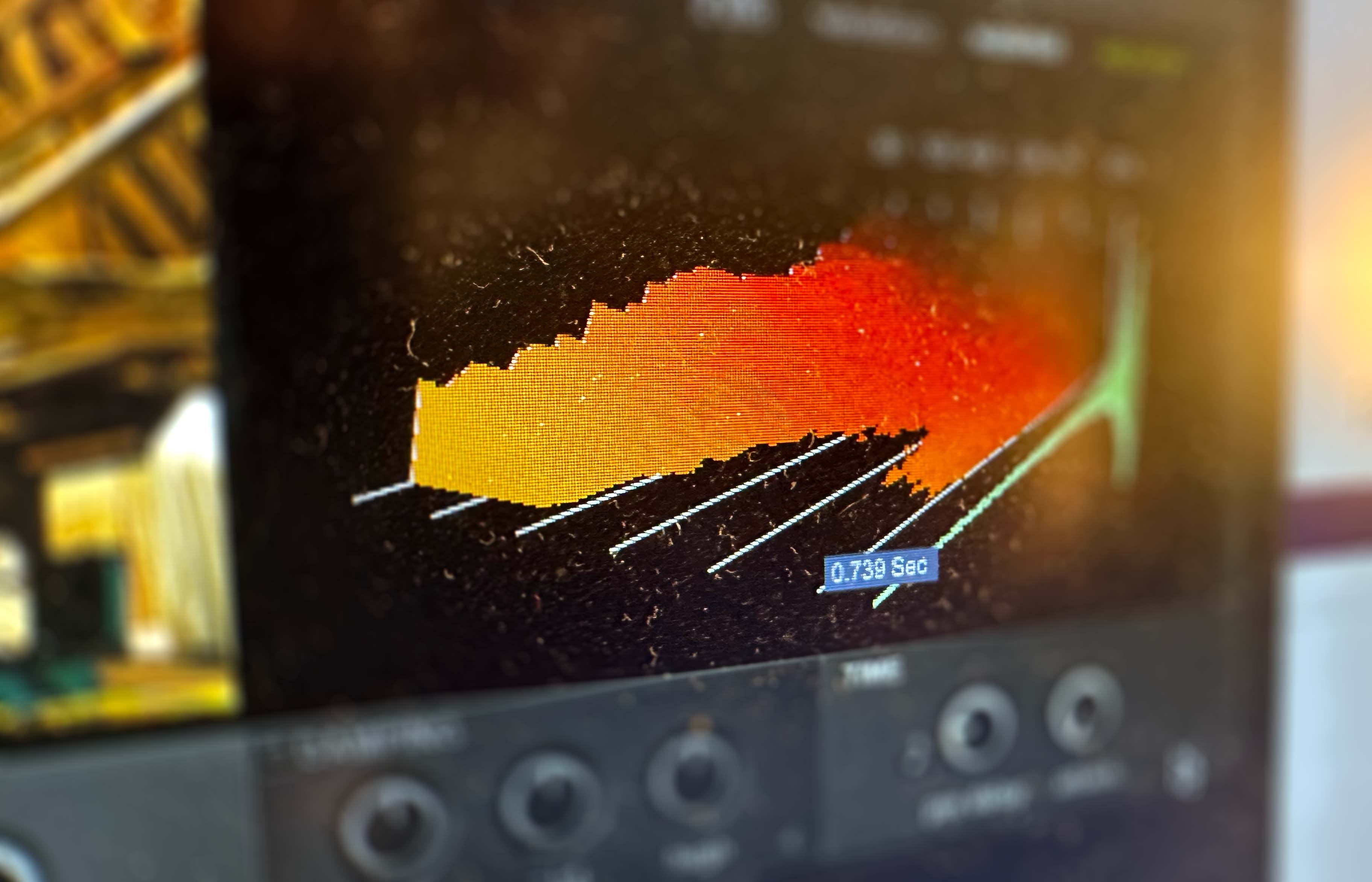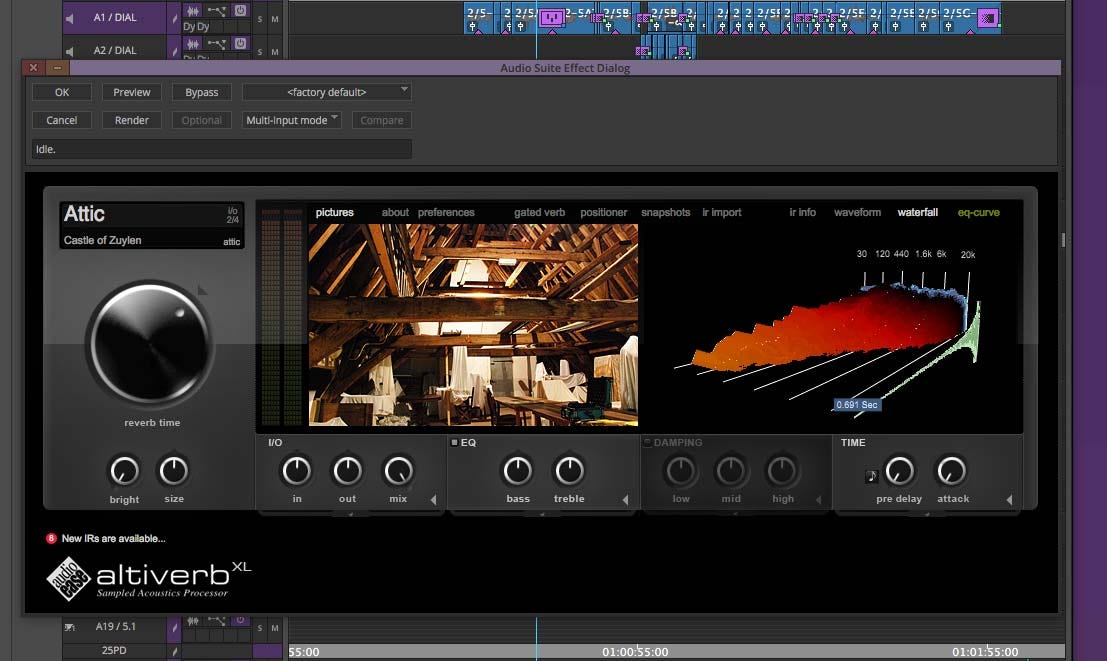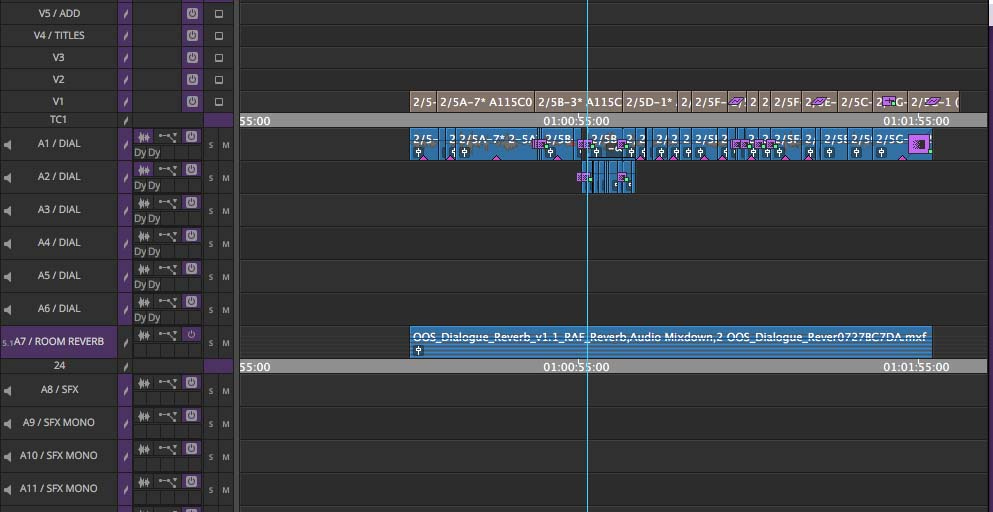Creating a Room: Dialogue and Reverb
How I used reverb to help situate characters within their environment.
Reverb has consistently posed challenges in Avid Media Composer. The DVerb tool itself has proven resilient over time, standing out as one of the most frequently employed features in the audio suite.
However, when used as a standalone audio suite effect, its applicability is confined by the clip that it has been placed on, cutting the reverb short.
More recently, Avid has introduced the capability to apply reverb to tracks, akin to ProTools.
Here is a great post by Evan Schiff on how he uses this, for example, on his dialogue tracks to help make it clearer. I find this really helpful and often apply them to my dialogue, especially when the quality of the recording isn’t great.
This enhancement empowers editors to fashion FX tracks for their reverb, tracks which I usually keep at the bottom of timeline beneath Dialogue, Sound Effects, and Music tracks. This innovation proves invaluable for crafting reverb for sound effects or music, particularly when aiming for a substantial echo that seamlessly transitions into the next scene or enhances the impact of big sound effects.
Altiverb
I'm not a big fan of audio plugins, especially in hectic scenarios with multiple editors and tight deadlines, as exporting from the wrong computer can easily result in unrendered or misrendered audio clips.
However, there's one audio plugin I truly appreciate, and that's Altiverb. As a convolution reverb, Altiverb adds a natural echo and ambiance from various rooms or environments, with the option to choose from a wide selection of rooms or even create your own (though I haven't had the chance to create my own just yet).
Another fantastic feature of Altiverb (I use version 7) is its ability to create reverb in 5.1. (Even when working in a stereo, I prefer to mix my sound in 5.1 during temp mixing as I’ve found it adds a subtle level of control to the mix and I have been building up a library of 5.1 room tones and sound effects recently)
Altiverb is not something that many editors use; not offline editors anyway (most sound editors have it as part of their kit). In fact, when I first thought about purchasing Altiverb, I contacted them to ask if it worked on Avid Media Composer the technicians in audioease didn’t know.
For Room Tone and Walla
While I already have a collection of sound effects, I enjoy dedicating time to crafting custom clips for specific spaces.
For a sequence in Constellation, dialogue took place in a large control room. At different times in the sequence, characters would be based in different parts of the room and in adjoining rooms. I wanted to create realistic "walla" (or people chatting) that would go under the dialogue and give a sense of people being busy but wouldn’t crowd out the dialogue. I took a traditional clean walla sound effect and applied slightly different reverb to it for the different areas of the building, saving these as individual files.
This helped in enhancing assembled scenes, providing subtle auditory separation between spaces, and offering greater control to allow clear dialogue in the midst of a bustling, noisy environment.
For Character Dialogue
For character dialogue this proved a little trickier. A number of scenes in the show took place in a wooden cabin but were filmed on a sound stage. So although the dialogue was often clean and crisp, it certainly didn’t sound like the characters were in the cabin.
The method that I used was done as part of an audio pass after each scene had been assembled. I would mix the dialogue as best I could to make sure that it was clear and then, once mixed, would sub out the dialogue in its entirety, mix it down, apply the reverb for the cabin which I had chosen and then mix down again. This created a single clip which I would place on a specific room reverb track.
Advantages
This creates a fantastic reverb of the cottage throughout the scene which at times helped it feel really eerie and creepy. Also, it allowed me to subtly mix up or down the reverb if I wanted to draw the audiences attention to the space. Combined in some scenes with foley passes of creaking floor boards and winds which had similar reverb applied, this helped in creating a fantastic creepy atmosphere.
Disadvantages
Even with an element of automation which I had applied to the process, this method was time consuming and didn’t lend itself to changing the dialogue in the edit (although, like anything complex, it is possible to do) so I would only recommend doing it sparingly and generally only towards the end of the process.












